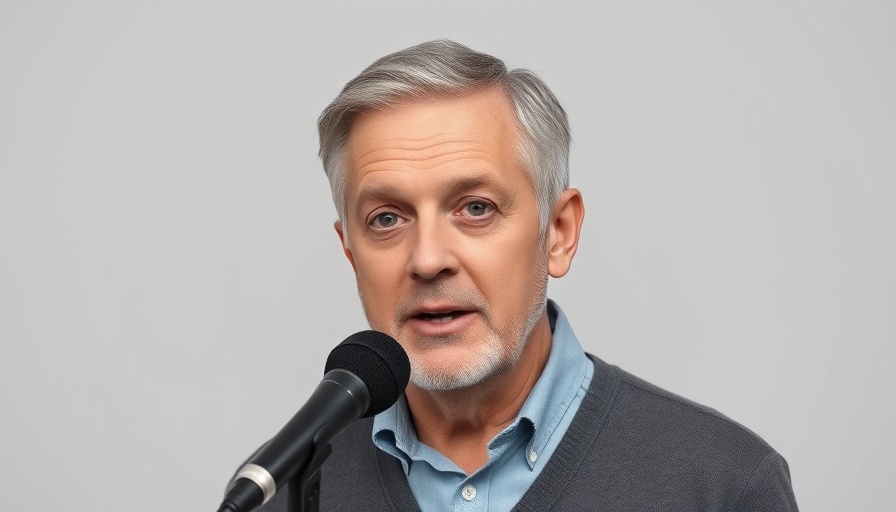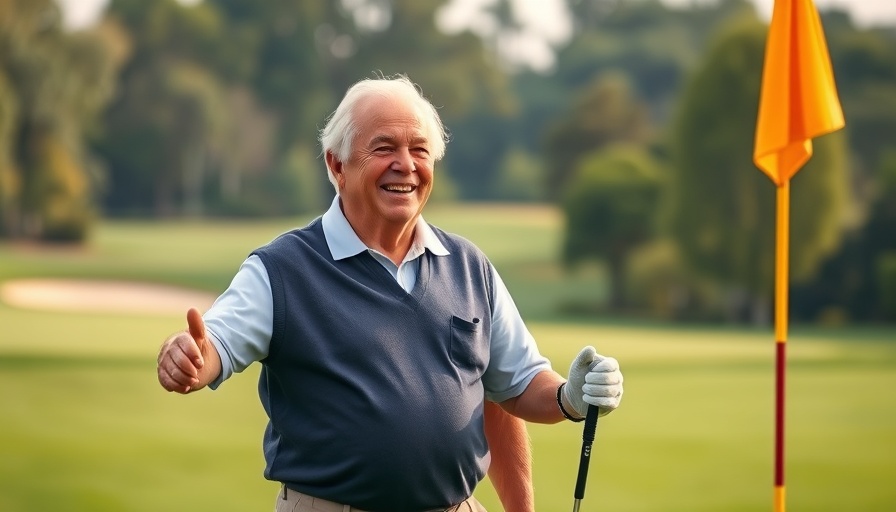
Vitamin D: The Sunshine Nutrient
As we age, understanding our body's needs becomes crucial. This is especially true for people over 60 living in Louisiana, where sunlight plays a significant role in our health. Vitamin D, often referred to as the "sunshine nutrient," is essential for maintaining healthy bones, immune function, and overall well-being. However, many older adults find themselves lacking this vital vitamin.
In 'Your Body NEEDS Vitamin D', the discussion dives into the vital role of Vitamin D for older adults, exploring key insights that sparked deeper analysis on our end.
Why Vitamin D Matters for Older Adults
Vitamin D is not just a vitamin; it is a hormone that our bodies produce when exposed to sunlight. For older adults, adequate levels of Vitamin D are critical in preventing osteoporosis and fractures, common health issues in this demographic. Furthermore, research indicates that Vitamin D may play a role in warding off illnesses such as diabetes and heart disease. As we age, the skin's ability to synthesize Vitamin D from sunlight declines, which underscores the importance of being aware of our intake.
Common Sources of Vitamin D
For those in Louisiana, one might think that basking in the sun would be enough to meet their Vitamin D needs, but that’s not always the case. For older adults, the body may require supplementation beyond sunshine. Foods rich in Vitamin D include fatty fish like salmon, fortified milk, and cereals. A more effective approach might involve a combined strategy of moderate sun exposure, diet, and supplements. Consultation with a healthcare provider will ensure that one receives sufficient Vitamin D tailored to their specific health status.
Shared Experiences: Stories of Resilience and Recovery
Throughout my career, I have encountered countless individuals whose stories highlighted the transformative power of understanding and improving their Vitamin D levels. One inspiring story is that of Mrs. Albertson from Baton Rouge, who, after suffering from frequent fractures, embarked on a journey to revitalize her health. After discussing her Vitamin D status with her physician, she made lifestyle adjustments that included dietary changes and safe sun exposure. Her remarkable recovery serves as a powerful reminder that awareness can lead to resilience.
The Role of Local Climate
Being in Louisiana, we are fortunate to have ample sunshine. Yet, as the seasons change, the availability of sunlight can vary. Winter months can be particularly challenging for older adults who may not get enough sunshine. This season is an ideal time for individuals to check their Vitamin D levels through simple blood tests and adjust their diet and supplementation accordingly.
Addressing Common Misconceptions
One common misconception about Vitamin D is that one can receive enough by simply spending time outside. While sunlight exposure is beneficial, other factors like skin pigmentation, sunscreen use, and aging affect Vitamin D synthesis. It’s essential to acknowledge these realities and make informed decisions about our health.
The Future of Vitamin D Awareness
With the growing body of research emphasizing the importance of Vitamin D in overall health, it is clear that public awareness is essential. Community health initiatives in Louisiana that focus on educating the elderly about Vitamin D can pave the way for healthier lifestyles. Such initiatives can improve health outcomes significantly and enhance the quality of life for many.
Actionable Steps for Better Health
For those over 60 in Louisiana, taking charge of Vitamin D intake can lead to enhanced health and vitality. Here are a few actionable steps:
Get Tested: Schedule regular blood tests to determine Vitamin D levels.
Modify Your Diet: Include more Vitamin D-rich foods such as oily fish, egg yolks, and fortified products.
Sun Exposure: Spend a safe amount of time outdoors regularly, preferably during midday when UVB rays are strongest.
Consult Your Doctor: Discuss possible Vitamin D supplements suitable for your health needs.
Understanding the role of Vitamin D is pivotal for older adults in Louisiana. It’s not just about surviving; it’s about thriving in the golden years of life. Take steps today to enhance your well-being, and remember that you don’t have to do it alone—healthcare providers and community resources are there to support you.
 Add Row
Add Row  Add
Add 



Write A Comment